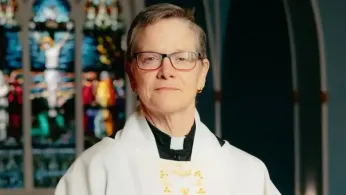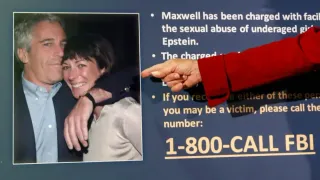
3 hours ago
Breaking the Stained-Glass Ceiling: Rev. Dr. Katrina Foster Ushers in a New Era for Queer Lutherans
READ TIME: 3 MIN.
If you grew up queer and religious, you know the drill: hushed warnings about “the lifestyle, ” coded prayers for “deliverance, ” and maybe, if you were lucky, a rainbow pin hidden beneath a church blazer. So when Rev. Dr. Katrina Foster was elected bishop of the Metropolitan New York Synod of the Evangelical Lutheran Church in America , it wasn’t just a personal victory—it was a resounding declaration that queer people not only belong in the church, but can lead it, too .
Bishop Foster’s story reads like a queer spiritual odyssey. Born in Florida, she earned her B. A. in Religion, Philosophy, and Sociology at Newberry College before taking the long road north for seminary and ordination in 1994 . Her ministry has been kaleidoscopic: Fordham Lutheran in the Bronx, inner-city parishes on the brink of closure, and St. John’s Lutheran in gentrifying Brooklyn. Along the way, she’s been everything from NYPD clergy liaison to affordable housing advocate, always with a flair for building vibrant, inclusive congregations out of what others might write off as lost causes .
But Foster’s ascent wasn’t without peril. In 2007, before the ELCA permitted openly gay clergy, she risked defrocking by coming out and marrying her wife . That act of integrity—equal parts bravery and love—became a blueprint for a ministry rooted in radical welcome. “Every congregation I have been called to serve was in the process of being closed with little hope of survival. Every congregation became a transformed community of faith, responsive to the immediate neighborhood with a reach further into the city and world, ” Foster reflected in a recent interview .
For LGBTQ+ people of faith—and the many more who’ve felt exiled from their spiritual homes—Foster’s election is a cultural watershed. Representation in the stained-glass corridors of ecclesial power has always been about far more than ecclesiastical titles. It’s about who gets to shape the liturgy, who gets to speak grace, and whose stories are sung in the sanctuary.
The ELCA, with its 2. 7 million members, is one of the largest Christian denominations in the U. S. . While the church has made strides—opening the ministry to LGBTQ+ people in 2009—the election of an out lesbian to a bishopric in New York sends a signal that old barriers are falling and new possibilities are rising. As Foster herself has modeled, there’s no contradiction in being deeply queer and deeply faithful.
Her leadership is poised to ripple outward: not only will she oversee hundreds of congregations across the city and beyond, but she’ll also shape policies, resources, and the wider culture of church inclusion . For queer Christians, especially young people, seeing an out bishop in the pulpit isn’t just a footnote—it’s hope in human form.
Foster’s ambitions go beyond the pulpit. She’s a champion for transforming church properties into community assets—affordable housing, child care centers, and neighborhood medical facilities . If the word “bishop” conjures up images of bureaucratic solemnity, Foster’s style is more activist-meets-architect, always looking for ways to make the church a living, breathing neighbor.
Her focus? “Evangelism, Discipleship, and Financial Stewardship, ” she says, but with a twist: “Some churches’ worship lives may end, but the buildings will be transformed into community response ministries. .. These will provide income streams to support MNYS ministries. We will invite congregations to self-select to become part of these opportunities” . It’s the gospel of the possible—queer, pragmatic, and unapologetically future-facing.
The significance of this moment isn’t just in Foster’s identity, but in her approach to leadership. She’s pledged to meet personally with every pastor in her synod within six months and visit every church in her first year—a hands-on, relational style that echoes the best of queer community-building . Plus, Foster’s coalition-building chops offer a blueprint for how faith can be both activist and pastoral, inclusive and transformative .
For a denomination that’s been called “the church of God’s work. Our hands. ,” Foster’s election is proof that queer hands can, and do, carry the work forward . And for LGBTQ+ folks everywhere—whether or not they darken church doors—it’s a reminder that every stained-glass ceiling is, ultimately, made to be shattered.
The lesson? Never underestimate the power of a queer leader who refuses to sit quietly in the pews. Whether you’re Lutheran, lapsed, or just love a good comeback story, Foster’s rise is your reminder: Queer faith is alive, well, and ready to preach.






